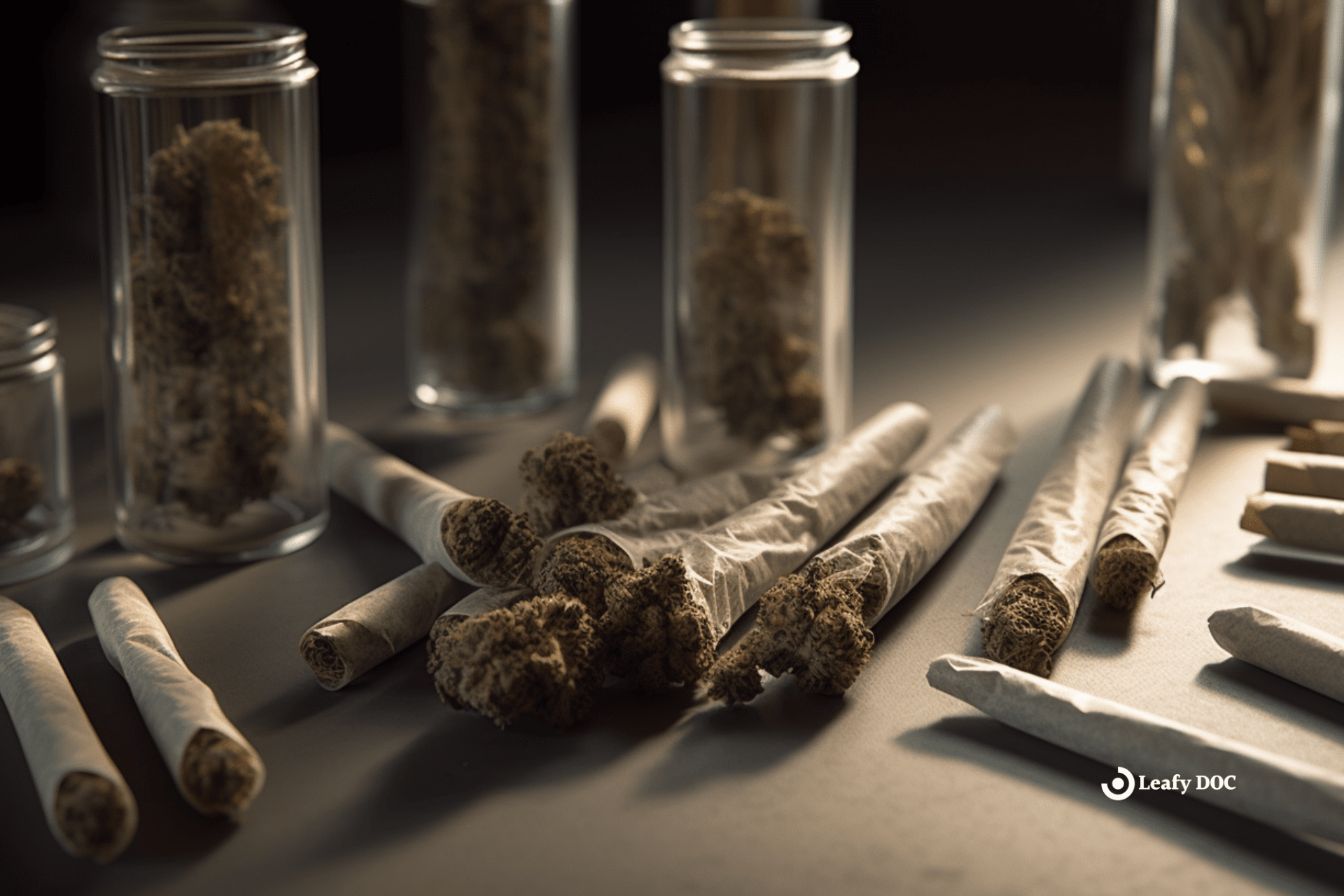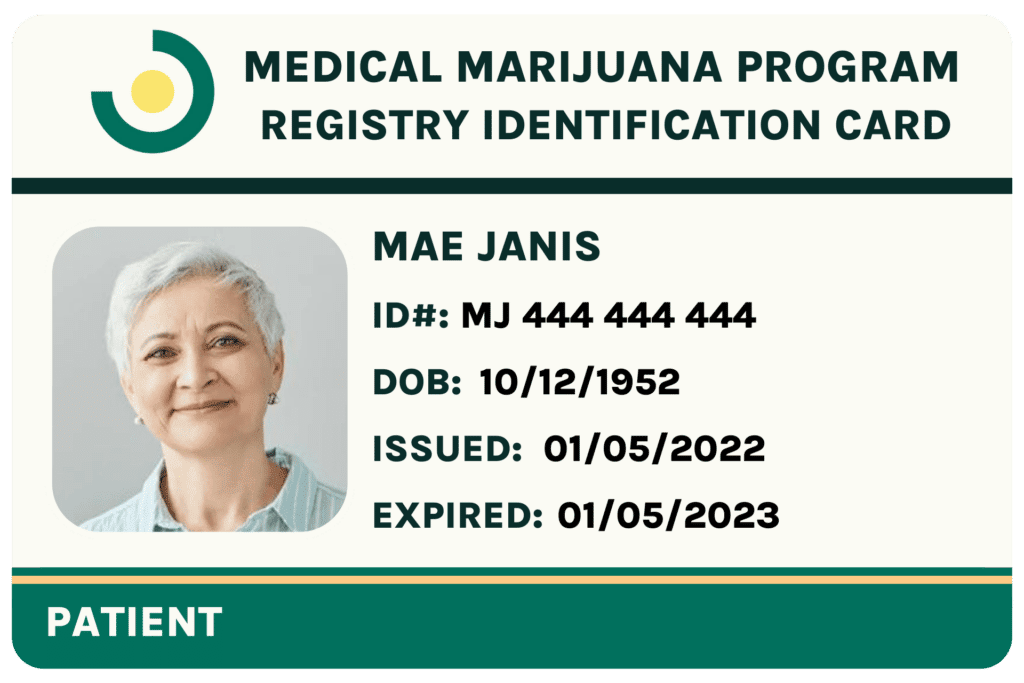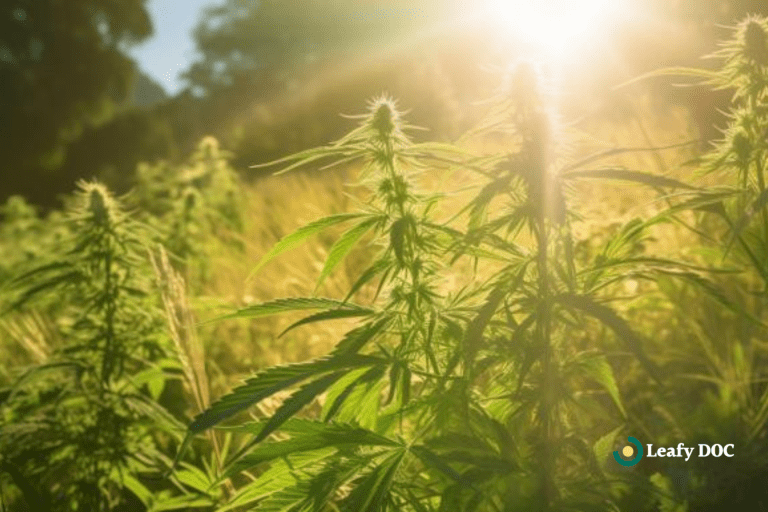How Many Joints Would Equal One Vape Cartridge?
by Haley Mills · November 21, 2023
Curious about the equivalence of joints and vape cartridges? Find out how many joints are equal to one vape cartridge in this eye-opening article. Satisfy your curiosity and click now for the surprising truth!

Vaping has become an increasingly popular method of consuming cannabis, with vape cartridges being a convenient and discreet option for many users. However, for those who are accustomed to smoking joints, it can be challenging to determine the equivalent of a vape cartridge in terms of joints. Understanding the measurements and factors contributing to this comparison is essential for making informed choices about cannabis consumption.
When it comes to vape cartridge measurements, a few key factors are important to consider. First, the size of the cartridge itself plays a significant role. Vape cartridges typically come in various sizes, such as 0.5 grams or 1 gram.
Additionally, the potency of the vape oil or concentrate contained in the cartridge can vary, affecting the number of joints it would be equivalent to. By understanding these measurements and factors, users can better gauge how many joints would equal one vape cartridge, allowing for a more informed and personalized cannabis experience.
Key Takeaways
- Vape cartridges have become a popular and convenient option for consuming cannabis, particularly for their discreetness.
- The size of vape cartridges can vary, with options like 0.5 grams or 1 gram, and their THC content is typically listed as a percentage on the packaging.
- Vape cartridges generally contain higher levels of THC compared to traditional joints.
- Determining the equivalent number of joints to a vape cartridge can be challenging and depends on factors such as cartridge size, THC potency, joint size, and personal consumption habits.
What Is a Vape Pen?
A vape pen is a small, battery-powered device used to vaporize cannabis oil or concentrates. Instead of burning the plant, it heats the extract just enough to produce an inhalable vapor—offering a smoother, more discreet experience than smoking.
- Portable: Slim and lightweight, vape pens are easy to carry and use anywhere.
- Simple: Most activate with a button press or just an inhale—ideal for beginners.
- Discreet: They produce little odor, making them perfect for low-profile use.
- Controlled dosage: Some pens let you manage how much THC or CBD you inhale per puff.
Vape pens combine convenience, tech, and a clean experience for cannabis users on the go.
Understanding Vape Cartridge Measurements
So, you’re probably wondering exactly how many joints it takes to equal one vape cartridge. Well, the answer to that question depends on a few factors, including the size of the vape cartridge and the THC content it contains.
Vape cartridge size variations can vary widely. Some cartridges may hold as little as 0.5 grams of oil, while others can hold up to 1 gram or more. The larger the cartridge, the more oil it can hold, and the more joints it could potentially equal. It’s important to note that not all cartridges are created equal, and the amount of oil they contain can vary from brand to brand.
How to Determine the THC Dosage in a Vape Cartridge
To get an accurate idea of how much THC you’re consuming per puff, you’ll need more than just the number on the label. Here’s how to break it down:
- Check the THC percentage: Most vape cartridges list their THC content as a percentage—say, 80%. That means 0.8 grams of THC per gram of oil. But this is the total content—not what you’re inhaling each time.
- Use a THC dosage calculator: By inputting the THC percentage, volume of oil, and your personal factors (like body weight or desired intensity), these calculators estimate how much THC you’re getting per puff or session.
- Look for lab test results: Reputable brands usually provide third-party lab reports that confirm potency and cannabinoid breakdowns—often including THC, CBD, and terpene content.
- Understand your device’s role: Vape efficiency varies. Devices with precise temperature control tend to vaporize THC more effectively than cheaper pens, meaning you get more consistent dosage.
- Know your formulation: Whether you’re using distillate, live resin, or full-spectrum oil, each type contains different THC levels and supporting compounds that influence your high.
By combining label info, lab results, your device settings, and calculators, you can dial in a more personalized—and more effective—vaping experience.
What You’ll Find on a THC Vape Cartridge Label
THC vape labels provide more than just potency details—they’re a quick guide to product safety, strength, and transparency. Knowing how to read them can help you avoid low-quality or unsafe options.
- THC Percentage: Usually listed as a percentage (e.g., 80%), this tells you how much of the oil is pure THC.
- CBD Content: Often included to indicate the balance between THC and CBD, which affects the type of high or therapeutic effect.
- Batch Number and Manufacture Date: Helps trace the product’s origin and ensure it hasn’t expired or degraded.
- Expiration Date: Indicates how long the product is expected to maintain potency and safety.
- Third-Party Lab Testing: Many labels include QR codes linking to lab reports that confirm THC levels and screen for contaminants like pesticides, solvents, and heavy metals.
- Terpene Profile (optional): Some premium products list dominant terpenes, which shape the aroma, flavor, and experience.
Always check these details before buying. A clear, well-labeled cartridge means you’re getting a product that’s verified, traceable, and tailored to your preferences.
What Affects the Amount of THC You Actually Inhale?
The THC percentage on the label is just part of the story. Several factors influence how much THC your body actually absorbs with each puff.
- Inhalation Style: Slow, deep breaths with a short hold allow more THC to reach the bloodstream compared to shallow inhales.
- Product Quality: Higher-quality cannabis oils, concentrates, or flower often contain stronger THC concentrations, which means more THC per inhale.
- Device Efficiency: Vaporizers with accurate temperature control help optimize THC release. A high-quality vape can deliver more consistent and potent hits.
- Cannabis Formulation: Whether you’re using flower, oil, or concentrate, each has different Δ9-THC strengths that affect your dose.
- Combustion vs. Vaporization: Smoking burns off some cannabinoids and introduces toxins. Vaping heats cannabis more gently, improving THC bioavailability and reducing waste.
- Set and Setting: Your mood, environment, and mindset can influence how THC affects you—even when the dose is the same.
Understanding these variables helps you gauge your dosage more accurately and customize your experience based on your tolerance and goals.
Are Vape Cartridges Tested for THC Content?
Yes, and that testing is critical to ensuring product safety and accuracy.
- THC Accuracy: Reputable dispensaries send their vape cartridges to third-party labs to verify that the labeled THC percentage matches what’s actually inside the cartridge.
- Contaminant Checks: These lab tests also screen for harmful substances like pesticides, residual solvents, and heavy metals—things you definitely don’t want in your lungs.
- Why It Matters: Lab-tested cartridges give you confidence that you’re getting a clean, consistent product that meets quality and potency standards.
Always check for a certificate of analysis (COA) or lab report from a trusted source before buying any vape cartridge. It’s one of the easiest ways to protect your health and make sure you’re getting what you pay for.
Do All Cannabis Vape Cartridges Contain CBD?
Not every vape cartridge includes CBD. The presence of CBD depends on the product’s formulation and whether it’s designed for relaxation or a more intense high.
- CBD-infused cartridges: These contain cannabidiol (CBD) along with other cannabinoids. They’re a popular choice for users seeking calming effects without strong psychoactivity.
- THC-dominant cartridges: Focused on delta-9-tetrahydrocannabinol (THC), these deliver the classic cannabis high and often contain little or no CBD.
- Always read the label: Product packaging will show whether the vape contains THC only, a CBD-THC blend, or is CBD-focused.
Understanding these differences helps you choose the right vape cartridge for your goals—whether it’s relaxation, euphoria, or a balanced effect.
How to Evaluate the Potency of a Vape Cartridge
The THC percentage on your vape label is just the beginning. To really understand how strong a vape hit will be, there are a few more factors to consider.
- THC and CBD Concentration:
Most vape cartridges list THC levels between 60% and 90%. Some also include CBD, usually between 10% and 50%. Together, these numbers set the base potency for what you’re inhaling. - Lab Testing for Accuracy:
Trusted brands provide lab reports showing the actual cannabinoid content in milligrams per gram. These reports verify that the labeled THC matches what’s in the cartridge—and confirm purity by ruling out contaminants. - Terpenes Influence Effects:
Terpenes don’t just affect aroma—they can also enhance or modify how THC and CBD feel. Lower-temp vapes preserve more terpenes, which can make a noticeable difference in your experience. - Device Efficiency Matters:
The coil temperature, battery voltage, and design of your vape device all influence how much THC is vaporized per puff. A high-quality vape pen ensures more consistent delivery and better bioavailability.
By understanding these elements, you can fine-tune your vaping experience—not just for strength, but for flavor, effect, and satisfaction. Always look for lab-tested products and use a device that complements your vape oil’s potency.
Calculating the Number of Joints in a Vape Cartridge
Calculating the number of joints in a vape cartridge is mind-boggling, isn’t it? It’s not as simple as just dividing the amount of vape oil by the size of a joint.
A few factors need to be considered, such as estimating joint sizes and the potency of vape cartridges. Here are three key points to help understand this complex calculation:
- Estimating joint sizes: Joints can vary in size, with some being smaller and others larger. On average, a joint typically contains around 0.5 grams of cannabis. However, this can vary based on personal preferences and rolling techniques. It’s important to remember this when determining how many joints are equivalent to a vape cartridge.
- The potency of vape cartridges: Vape cartridges come in different potencies, usually measured in milligrams of THC (the psychoactive compound in cannabis). The average potency of a vape cartridge can range from 50mg to 1000mg of THC. This means that the amount of THC in a vape cartridge can be significantly higher than what is typically found in a joint. It’s important to consider this when trying to calculate the number of joints equivalent to a vape cartridge.
- Personal consumption habits: Another factor to consider is personal consumption habits. Some individuals may take smaller hits from a vape cartridge, while others may take larger hits. This can affect how long a vape cartridge lasts and how many joints it would be equivalent to.
Joint Size vs. Vape Dosage: What’s the Difference?
The size of a joint directly affects how much THC you consume in one session. Larger joints hold more cannabis and usually deliver stronger, faster effects, but they can be unpredictable depending on how they’re rolled.
Vape cartridges, in contrast, offer more controlled dosing. Each puff typically delivers a set amount of THC, depending on the cartridge’s potency. This makes it easier to monitor your intake and adjust as needed—especially helpful if you’re aiming for consistency or want to avoid overconsumption.
So, while joints can hit harder up front, vape pens give you more precision and control over your THC experience.
How Many Vape Puffs Equal One Joint?
It’s not an exact science, but you can estimate how many puffs from a vape cartridge match the THC content of a typical joint by breaking down the numbers.
- THC in a Joint: Most joints contain about 0.32 grams of cannabis. If the strain has around 20% THC, that equals roughly 64mg of THC per joint.
- Vape Oil Strength: A 1-gram vape cartridge with 70% THC holds about 700mg of THC in total.
- Puff Estimate: If your device delivers around 2mg of THC per puff, it would take about 32 puffs to equal the THC dose of one joint.
- Personal Tolerance Matters: Your experience may vary depending on how hard you inhale, your device, and your tolerance. Always start low—just a few puffs—and wait to see how your body responds.
Understanding these numbers helps you gauge your intake more accurately and tailor your cannabis experience to your needs.
Factors Affecting the Number of Joints
Factors like the potency and size of the joints can greatly impact the number needed to match one vape cartridge. When it comes to THC potency, vape cartridges tend to have higher levels compared to traditional joints. The THC content in vape cartridges can range from 60% to 90%, whereas joints typically contain around 15% to 25% THC. This means that you would need significantly more joints to match the potency of a single vape cartridge.
Additionally, the size of the joints can also play a role in determining the number needed. Larger joints will contain more cannabis, increasing their potency and reducing the number needed to equal one vape cartridge.
Individual smoking habits also come into play when considering the number of joints needed to match a vape cartridge. Some individuals may have a higher tolerance for THC and require more joints to achieve the same level of effects as a vape cartridge. On the other hand, individuals with a lower tolerance may find that a single joint is enough to match the effects of a vape cartridge. It is crucial to consider factors such as frequency of use, experience with cannabis, and personal preferences when determining the number of joints needed.
A study categorized participants into four distinct groups based on their smoking habits:
- Individuals who consumed the equivalent of one cannabis joint daily for a span of five years.
- Participants who smoked a pack of cigarettes each day for a minimum of one year.
- Those who engaged in both cannabis and cigarette consumption.
- Non-smokers who did not use either cannabis or tobacco products.
This classification allowed researchers to analyze the effects of each type of smoking on health.
How Tolerance Affects THC Consumption
Everyone reacts differently to cannabis, and your tolerance level plays a big role in how many vape puffs or joints you might need to feel the effects.
- Lower tolerance: Casual or infrequent users may find that even a few puffs from a vape cartridge deliver strong effects, often equivalent to an entire joint.
- Higher tolerance: Regular cannabis users, especially those using daily, often build up a resistance to THC. This means they might need more puffs from a marijuana vaporizer pen—or even multiple joints—to reach the same high they used to feel with much less.
- Habit matters: Your consumption frequency, preferred method, and even your body chemistry all affect how THC hits you. That’s why two people using the same product may have completely different experiences.
Understanding how THC tolerance affects your dosage needs can help you use cannabis more intentionally, whether you’re smoking or vaping.
How Smoking Frequency Affects Cannabis Tolerance and Joint Equivalence
The number of joints it takes to match the effects of a vape cartridge isn’t a fixed number—it depends heavily on individual smoking habits and frequency of use. Someone with a high THC tolerance, built over time through regular use, may need multiple joints to feel the same effects a vape delivers in just a few hits. On the other hand, occasional users with lower tolerance might find a single joint just as effective as a vape session.
Frequent cannabis consumption doesn’t just change tolerance—it also alters how your body and mind respond to THC over time. Studies show regular use can lead to cognitive challenges like memory loss, particularly in students or professionals who rely on focus and short-term recall. Mental health issues, including anxiety and depression, may also be amplified with repeated use, especially in binge patterns. Physically, smoking often and deeply—similar to tobacco—can increase respiratory risks.
What Are the Dangers of Smoking a Blunt?
Blunts may seem like a traditional choice, but burning cannabis, especially when wrapped in tobacco leaves, introduces serious health risks.
- Respiratory issues: Inhaling smoke from combusted plant material can irritate the lungs and lead to chronic bronchitis or reduced lung function over time.
- Cardiovascular risks: Carbon monoxide and tar increase the likelihood of heart disease, high blood pressure, and stroke.
- Mental health effects: Frequent use may worsen anxiety or depression, particularly in those already predisposed.
- Weakened immunity: Long-term smoking can suppress the immune system, leaving you more vulnerable to illness.
While some turn to vaping as a less harmful alternative, it’s important to understand that every method comes with its own risks. Making informed choices starts with understanding what you’re inhaling.
Technical Considerations: THC Concentration in Vaping vs. Smoking
Potency
Vape cartridges are typically much more potent than cannabis flower. Most vape oils contain between 60% to 90% THC, while traditional cannabis used in joints ranges from 10% to 25%. This means each puff from a vape delivers a stronger hit than smoking.
Bioavailability
Vaping also leads to better THC absorption, with bioavailability rates between 30% and 60%. In contrast, smoking joints results in lower absorption, around 10% to 25%, since more THC is lost during combustion and exhalation.
Delivery Method
Vaping uses lower heat to turn cannabis oil into vapor, avoiding combustion and its byproducts. Smoking burns the flower, which may release more terpenes and cannabinoids but also introduces unwanted particles into the lungs and degrades some THC.
Efficiency
Vape pens often offer more consistent THC delivery, though factors like battery quality and coil design can influence performance. Smoking joints is less predictable—roll size, grind consistency, and puff style all affect how much THC is absorbed.
In short, vaping offers higher potency, efficiency, and bioavailability, while smoking provides a fuller cannabinoid profile but with less predictability and more THC loss.
Comparing Vape Cartridges to Traditional Joints
Comparing vape cartridges to traditional joints is like comparing a sleek sports car to a vintage motorcycle. Vape cartridges, with their advanced technology and precise dosage, offer a more controlled and convenient experience compared to the traditional method of smoking joints.
When it comes to health implications, vaping has been considered a safer alternative to smoking joints. While smoking joints involves the combustion of plant material, releasing harmful toxins and carcinogens, vaping heats the oil in the cartridge to produce vapor without the combustion process. This significantly reduces the intake of harmful substances, making vaping a potentially healthier option for those who enjoy cannabis.
However, the method of smoking cannabis can greatly impact its effects on the lungs. Cannabis smokers typically inhale more deeply and hold their breath for longer periods, increasing the exposure of lung tissues to smoke and its harmful components. Moreover, cannabis is often smoked without a filter. This absence of filtration means that smokers could be ingesting more tar and toxins, which can further compromise lung health.
Another critical factor is the temperature at which cannabis is smoked. Smoking at higher temperatures can release additional harmful substances that irritate and damage the lung tissue. In contrast, the vaping process avoids combustion, potentially reducing these risks.
Ultimately, understanding these differences can help users make more informed choices about how they consume cannabis, especially in terms of protecting their lung health.
Vaping vs. Smoking: The Deeper Differences
If joints are the old-school classic, vape cartridges are the modern upgrade. But beyond style and convenience, there are real differences in how they work—and how they affect your body.
- Temperature & Combustion:
Vaping heats cannabis oil to around 320–428°F, just enough to turn it into vapor. Smoking joints involves combustion at much higher temperatures—up to 932°F—which burns the plant and releases more harmful byproducts. - Health Impact:
Because vaping avoids combustion, it produces fewer toxins and carcinogens. This makes it a potentially safer option for long-term cannabis use, especially for your lungs. - Onset & Bioavailability:
Both methods deliver effects quickly, but vaping tends to hit faster and harder. That’s because THC bioavailability can reach up to 46% when vaping, compared to about 30% when smoking—meaning more of the compound actually enters your bloodstream. - Dosage Control:
Vape pens often allow for precise dosing with each puff and adjustable heat settings. With joints, it’s harder to control how much THC you’re getting, as effects can vary depending on how it’s rolled and smoked. - Flavor & Terpenes:
Lower temperatures in vaping preserve delicate terpenes, offering better flavor and aroma. Smoking often burns them off, resulting in a harsher, more “burnt” taste.
Bottom Line: Both methods have pros and cons. If you’re looking for flavor, dosing control, and reduced health risks, vaping may be the better choice. If you prefer the full-body experience of traditional cannabis, a joint might still be your go-to.
What is the Effect of Smoking One Marijuana Joint on the Lungs Compared to Cigarettes?
Smoking marijuana and smoking cigarettes both have impacts on lung health, but their effects can differ in intensity. Research highlighted in the journal Thorax suggests that inhaling smoke from a single cannabis joint can be as damaging to the lungs as smoking up to five cigarettes.
THC Bioavailability: Vaping vs. Smoking Joints
Bioavailability refers to how efficiently THC enters your bloodstream. Vaping typically offers higher bioavailability than smoking joints. That’s because vaping heats cannabis at lower temperatures, preserving more THC and delivering stronger effects with fewer puffs. Smoking joints, on the other hand, involves combustion, which can degrade THC before it’s absorbed. As a result, you may need more inhalations from a joint to feel the same effects you’d get from fewer puffs of a vape pen. Understanding this can help you decide which method best fits your cannabis experience.
Understanding the Comparison
- Volume of Smoke: Marijuana smokers may inhale more deeply and hold the smoke for longer compared to cigarette smokers. This practice can increase the exposure of the lungs to harmful substances.
- Substance Composition: While both marijuana and cigarettes contain combusted material, the compounds differ. However, both produce tar and other chemicals that can irritate the lungs.
- Frequency of Use: Though cigarette smokers typically consume multiple cigarettes daily, marijuana users might smoke fewer joints. Despite this difference, the concentrated smoke from marijuana may still pose a significant risk.
Health Implications
- Immediate Effects: Smoking can lead to short-term irritation, coughing, and a sense of chest tightness. Cannabis’ deeper inhalation may amplify these effects.
- Long-Term Consequences: Over time, both marijuana and cigarette smoke can contribute to chronic bronchitis and other respiratory issues.
While the frequency and cultural habits around smoking marijuana differ from cigarette smoking, the immediate impact on lung health from a single joint can indeed be significant, equating the damage of several cigarettes in just one instance.
How Smoking Cannabis Impacts the Lungs’ Airways
Smoking cannabis can have several adverse effects on your lungs, particularly on the airways. The inhalation of cannabis smoke may lead to a reduction in the small, fine airways that are essential for optimal lung function. This decrease impairs airflow efficiency and may cause the lungs to exert more effort to deliver oxygen throughout the body.
Moreover, the larger airways can suffer damage as well. This damage contributes to restricted airflow, making breathing more laborious. These changes collectively highlight that smoking cannabis can significantly strain the respiratory system, potentially compromising overall lung health.
Cannabis smokers reported experiencing several respiratory symptoms. They noted issues such as wheezing, persistent coughing, and a sensation of tightness in the chest. Additionally, they often dealt with excess mucus or phlegm production.
According to the study, a specific respiratory condition was found exclusively in individuals who smoked tobacco. This condition, known as emphysema, manifested in those who consumed tobacco either by itself or alongside other substances.
In terms of environmental impact, vape cartridges also have some advantages over traditional joints. Smoking joints typically involves the use of rolling papers, which are made from trees and contribute to deforestation. Additionally, the cultivation and production of cannabis for joints can have a significant carbon footprint due to energy-intensive indoor growing methods. On the other hand, vape cartridges are often made from materials that can be recycled, such as glass and metal. This reduces waste and lessens the environmental impact of cannabis consumption.
Which Gets You More Stoned: Vaping or Smoking?
If you’re aiming for a stronger and faster high, vaping usually delivers more intensity than smoking joints. That’s because vaporizers heat cannabis in a way that preserves cannabinoids like THC, allowing them to enter the bloodstream quickly. In contrast, smoking involves combustion, which can burn off some of the THC and result in a slower, more gradual high. However, your experience also depends on personal tolerance and the cannabis strain. Higher-THC strains will hit harder regardless of the method, but vaping tends to produce a more immediate and potent effect overall.
How to Check Vape Product Potency
Want to make sure your vape cartridge delivers the effects you expect? Start by checking the THC and CBD percentages listed on the product label. These numbers give you a quick idea of how strong the effects might be, especially if you’re looking for a more relaxing or energizing experience.
Many licensed products also come with QR codes—scan them to view lab test results confirming the product’s potency and purity. This is one of the easiest ways to ensure you’re not getting a diluted or contaminated cartridge.
Stick to trusted brands that regularly publish lab results and follow strict quality standards. And always avoid unverified sellers or products with vague labels. A little research goes a long way in getting a safe, effective vape.
How Is Quality Control Handled for Vape Products from Dispensaries?
- Comprehensive Lab Testing:
Trusted dispensaries test vape cartridges to confirm THC levels and check for contaminants like pesticides, heavy metals, and residual solvents. - Third-Party Verification:
These tests are carried out by independent labs to ensure unbiased results and maintain transparency for consumers. - Label Accuracy Checks:
Lab results are compared to product packaging to verify that the listed THC percentage matches the actual content inside the cartridge. - Consistent Product Quality:
Regular testing helps maintain consistent quality across batches, giving users more confidence in the safety and strength of their vape products.
How Do Nicotine Vapes Compare to THC Vapes?
Though both avoid combustion, nicotine and THC vapes are designed for different purposes and carry distinct health considerations.
- Purpose & Content:
Nicotine vapes deliver nicotine, often with flavored e-liquids and additives. THC vapes, on the other hand, use cannabis oil to provide a psychoactive high through vaporized delta-9-tetrahydrocannabinol. - Delivery & Experience:
THC vapes typically offer faster onset and more controlled dosing than smoking cannabis. Nicotine vapes aim to replace cigarettes without tar, but still deliver an addictive substance. - Health Risks:
Nicotine is known for raising blood pressure and increasing heart disease risk. THC vapes may pose fewer respiratory risks than smoking, but low-quality cartridges can still lead to lung injuries if contaminated.
In short, both options come with trade-offs. Choosing between nicotine or THC vapes depends on your goals—but it’s worth weighing product quality and long-term effects.
Making Informed Choices for Your Cannabis Consumption
When it comes to choosing how to consume cannabis, it’s important to make informed decisions about the amount and method that works best for you.
One factor to consider is dosage recommendations. Vape cartridges typically contain a concentrated form of cannabis oil, which can have higher levels of THC compared to traditional joints. This means that a single hit from a vape cartridge can deliver a higher dose of THC compared to smoking a joint. Start with a low dosage and gradually increase as needed, especially for those who are new to cannabis or have a lower tolerance.
Another aspect to consider is the health effects of vaping versus smoking. Vaping is often considered a healthier alternative to smoking because it doesn’t involve combustion, which can produce harmful byproducts. However, it’s still important to note that vaping can come with its own risks. Some studies have suggested that vaping can lead to lung damage or respiratory issues, although more research is needed to understand the long-term effects fully.
Frequently Asked Questions
Can vape cartridges be used with any type of vape pen or device?
Vape cartridges are designed to be used with specific vape pens or devices. Compatibility varies depending on the brand and type of cartridge. Vape cartridges offer advantages such as convenience, discretion, and precise dosing compared to other forms of cannabis consumption.
Are there any health risks associated with vaping cannabis?
There are potential health risks associated with vaping cannabis, especially in the long term. While vaping may produce fewer harmful byproducts than smoking, it can still irritate the lungs and lead to respiratory issues.
How long does a vape cartridge typically last before it needs to be replaced?
On average, a vape cartridge typically lasts between 100 to 200 puffs before needing to be replaced. However, the longevity can be influenced by factors such as the frequency of use, temperature, and the type of oil used.
Can vape cartridges be refilled or reused?
Vape cartridges can be refilled or reused, but there are pros and cons to each method. Refilling allows for customization and cost savings, while reusing may compromise flavor and potency. To extend the lifespan, store cartridges upright and at room temperature.
Are there any legal restrictions or age limits for purchasing vape cartridges?
Yes, there are legal restrictions and age limits for purchasing vape cartridges. These restrictions vary by jurisdiction, but they aim to regulate access to vaping products due to concerns about their potential health risks, vape cartridge flavor options, and preferences. Additionally, the impact of vaping on indoor air quality is a growing concern.
What are the short-term and long-term effects of cannabis consumption?
Cannabis affects everyone differently, but common short-term effects include euphoria, altered sensory perception, increased appetite, and sometimes anxiety or impaired coordination. Over time, frequent use may lead to cognitive decline, respiratory issues (especially when smoked), mental health challenges, or dependency. Being aware of these effects can help you make informed choices about your cannabis consumption.
What is a THC dosage calculator and how do you use it?
A THC dosage calculator helps you estimate how much THC you’re consuming per puff or session. By entering details like the THC percentage, product volume, your body weight, and the effect intensity you want, it calculates an estimated dose. It’s especially useful for beginners or anyone looking to customize their cannabis experience and avoid overconsumption.
Can too much nicotine affect your THC high?
Yes, consuming excess nicotine can change how THC affects you. It may amplify side effects like anxiety, dizziness, or a racing heart, making it hard to tell if you’re reacting to the THC or the nicotine. If you’re using both substances, it’s best to monitor your intake to avoid discomfort or confusion.
Last Updated: September 16, 2025
Get Approved for Your Medical Marijuana Card in Minutes!

Get Your Medical Card
Connect with a licensed physician online in minutes

Like This Article?
Share with your friends
Table of Contents
Keep Reading
-
5 Steps to Obtain Your Iowa Medical Marijuanas Card
Learn how to obtain your Iowa medical marijuanas card in five simple steps.
-
Using Cannabis As A Sleep Aid
Struggling to sleep? Find out how cannabis can be your secret weapon for a restful night’s rest. Explore the benefits and risks of using cannabis as a sleep aid now!
-
Exploring The Benefits Of Topicals For Cannabis Pain Relief
Experience the incredible pain-relieving benefits of cannabis topicals! Find out why topicals are a game-changer for pain relief and explore their effectiveness today. Click here to learn more about using topicals for pain relief!



